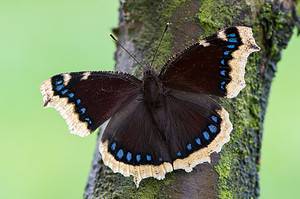Key Points
- Butterflies are beautiful creatures and as long as one can remember they have been associated with myths and fairytales.
- Its fascinating to watch them fly around from one flower to another and many people have started the trend of creating butterfly garden with the sole motive of attract them.
- Due to the loss of habitat and global warming, number of butterflies are dwindling, these flower gardens can make it possible for them to increase their population.
Butterflies are colorful, delicate, and graceful creatures that add so much beauty to the world. They are also exciting to watch as they grow from one stage of their life to the next, including the stages of egg, larva, pupa, and winged adult. For these reasons, many people want to know what flowers attract butterflies so they can enjoy more of them in their yard or garden.
Beyond their pretty colors, these winged insects play a major role in the environment. They work much like bees to pollinate plants and keep our planet green. Unlike work-minded bees, they do this vital service without knowing it. Butterflies merely want tasty nectar that makes up their diet and carries pollen from plant to plant in the process. Butterflies travel farther than bees, carrying their uploaded pollen across a larger region.
Also like bees, butterfly populations are dropping in numbers. They are losing habitat to urbanization and pesticide overuse. Still, nine of every 10 types of plants need help from pollinators like butterflies. This makes it more important than ever before that humans help the pollinators by providing them with the resources they need. Meanwhile, we can watch these creatures lovely wings flit from flower to flower as they feed and pick up pollen, giving us a thrilling show of their fragile but majestic beauty.
To answer the common question of, “What flowers attract butterflies,” we rank the top 10 most attractive plants for butterfly species below. Although not all of these flowering plants will grow in all regions, you are sure to find some great options for your garden butterfly attraction here.
#10: Milkweed
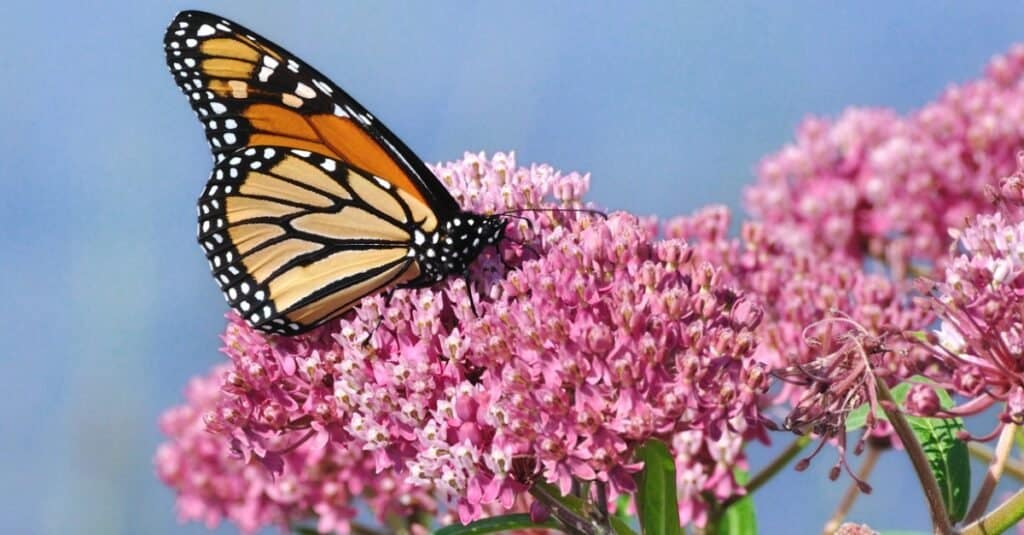
©iStock.com/herreid
Milkweed is the only flower that monarch caterpillars use as a food source. It is also the favorite nectar provider for the monarch, the most widely recognized type of butterfly in North America, and many other adult butterflies. Because it supports the butterfly well from egg to adulthood, this plant is never a bad garden choice. The swamp milkweed blooms with lovely pink flower bursts. But there are more than 100 types of milkweed to choose from for a garden that attracts the monarch and many other species of butterflies.
#9: Lavender

©iStock.com/igoriss
For a beautiful but delicate pop of color in your garden or potted along your walkways that is sure to attract many species of butterflies, grow lavender. These sweet-smelling, perennial aromatic herbs are not just magnetic for butterflies. The plant’s flowers attract bees, hummingbirds, and other species of small birds, too. They are also useful in teas, DIY bath products, fragrance sachets, potpourri, and for many other uses around your home. The plant is heat-resistant and grows well in high-temperature regions, thanks to its Mediterranean origin.
#8: Heliotrope
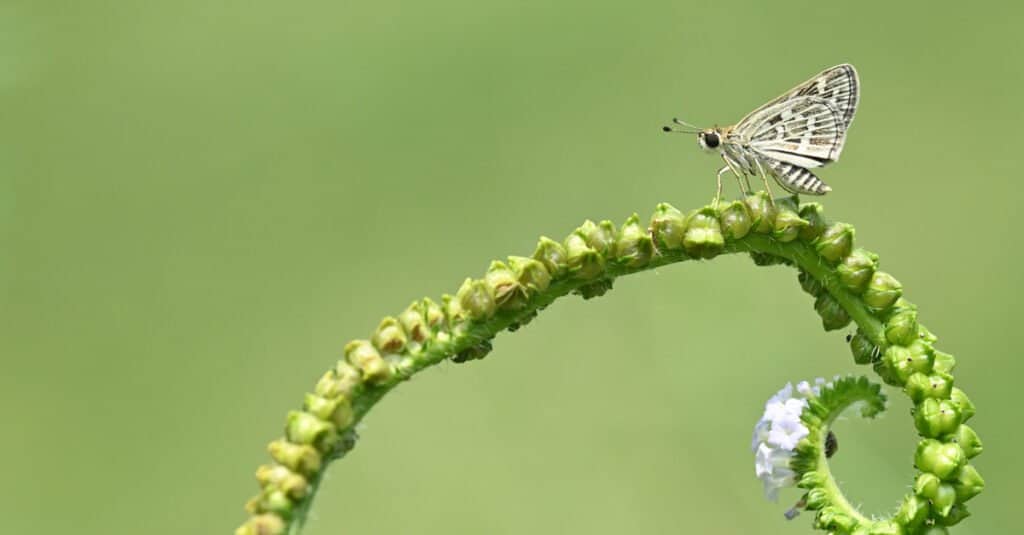
©suradech sribuanoy/Shutterstock.com
Like lavender, heliotrope blooms in bright purple flowers sure to attract various species of butterflies. A butterfly can see color and knows the most vibrant blooms provide the sweetest nectar. Having these plants growing in your garden or potted will surely draw the pretty insects in. Also called “Dwarf Marine,” heliotrope grows large collections of many small flowers, giving butterflies lots of food per square inch. The blooms are also known for smelling of sweet cherry pie to humans.
#7: Blazing Star

s
a significant amount of nectar for butterflies.©Media Marketing/Shutterstock.com
Featuring conical purple, pink, or white blooms, these perennials grow in one foot to three feet tall upright stalks with tiny leaves. This means it does not take up much space but provides plenty of nectar for butterfly diets. These flower stalks grow well along a fence and bloom from June to early fall. If you plant a blazing star, you can expect to see monarch butterflies and other butterfly species. But you can also expect to attract goldfinch birds and hummingbirds for even more intriguing winged activity.
#6: Black-Eyed Susan

©iStock.com/Mariia Romanyk
A yellow flower that attracts pearl crescent butterflies is the black-eyed Susan. This North American wildflower was one of the first flowering plants domesticated for gardens and potted displays. Besides having a great history, the black-eyed Susan features its eye-catching black center that provides room for a butterfly to perch and feed for several seconds before moving on to the next blossom. These long-blooming flowers are hardy perennials that grow very quickly and fill pots well.
#5: Pot Marigolds

©Nick Pecker/Shutterstock.com
Pot marigolds are perennials that feature vibrant yellow, orange, pink, or cream blooms that attract monarch butterflies and other pretty species. At the same time, these flowers repel pests from your gardens, such as mosquitoes and cabbage worms. These flowers are shaped like inverted bells or the “pots” for which they are named. This enables the blooms to hold dew well in the mornings and after rainfall, inviting butterflies in with the promise of nectar, pretty colors, and droplets of water for hydration. That is a lovely butterfly buffet! Even better, the long-blooming pot marigold offers continual flowering from May to early fall.
#4: Bluestar
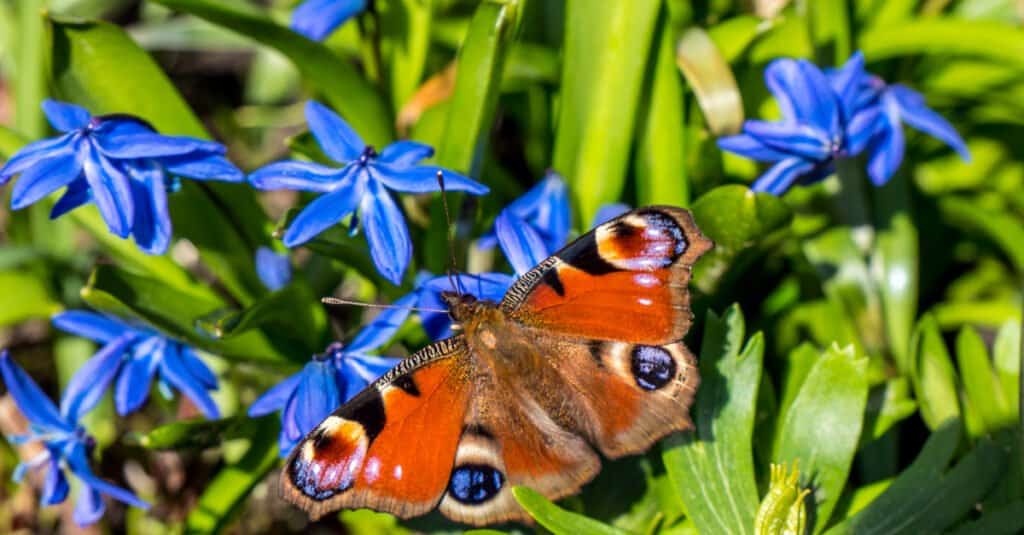
©Animaflora PicsStock/Shutterstock.com
Perennials that grow as tall as three feet and feature blue star-shaped blooms, these flowers are sure to bring butterflies into your garden for a sweet meal of nectar each spring. As a favorite of the zebra swallowtail butterfly, the flowers sit atop lush grass-like foliage perfect as ground cover or in a bordered garden. These plants grow best in loamy, well-drained soil and partial shade. But with enough moisture, they can even grow in direct sunlight. The snowberry clearwing moth also loves this plant for egg-laying and providing food for larvae.
#3: Lantana

©Sari ONeal/Shutterstock.com
As you may have guessed, butterflies love brightly colored flowers. One of their favorite colors is pink, like the pinks of the abundantly large blossoms of the long-blooming lantana. But lantana is as colorful as any butterfly’s wings, offering multiple hues from each plant. Hearty cluster blooms for this shrub-like annual can range from yellows and pinks to deep reds and purples. Even better, the abundance and variety of colors keep coming from late spring until the first frost.
Lantana is a true butterfly magnet, bringing in many species like:
- Giant swallowtail
- Monarch
- Pipevine swallowtail
- Queen
- Red-spotted purple
- Zebra longwing
- Spicebush swallowtail
- Julia Heliconian
- Checkered white
- Cloudless sulphur
- Gulf fritillary
- Great southern white
#2: Coneflower
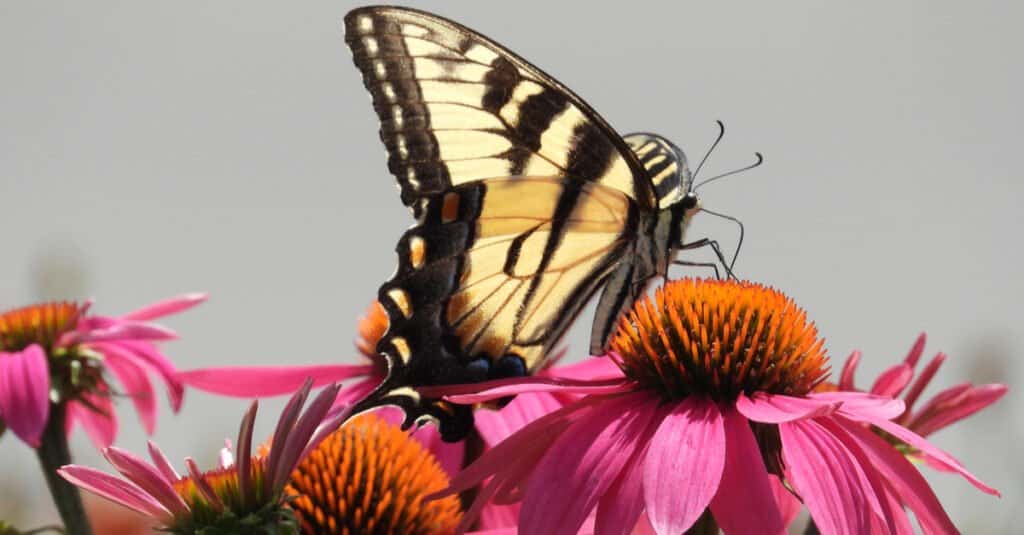
©Tina Shaskus/Shutterstock.com
Also called echinacea, the pretty purple coneflower is a late summer bloomer similar in structure to black-eyed Susan. But instead of golden yellow and black flowers, the coneflower provides a bounty of pretty purple blooms with brown centers. This perennial grows low to the ground, working well to easily fill out bordered gardens. They work equally well as potted plants. Any butterfly must love this nectar provider’s reliability because it grows well from Florida to Minnesota and even endures drought well. But it is a favorite of fritillaries, monarchs, painted ladies, and swallowtails, in particular.
#1: Butterfly Bush
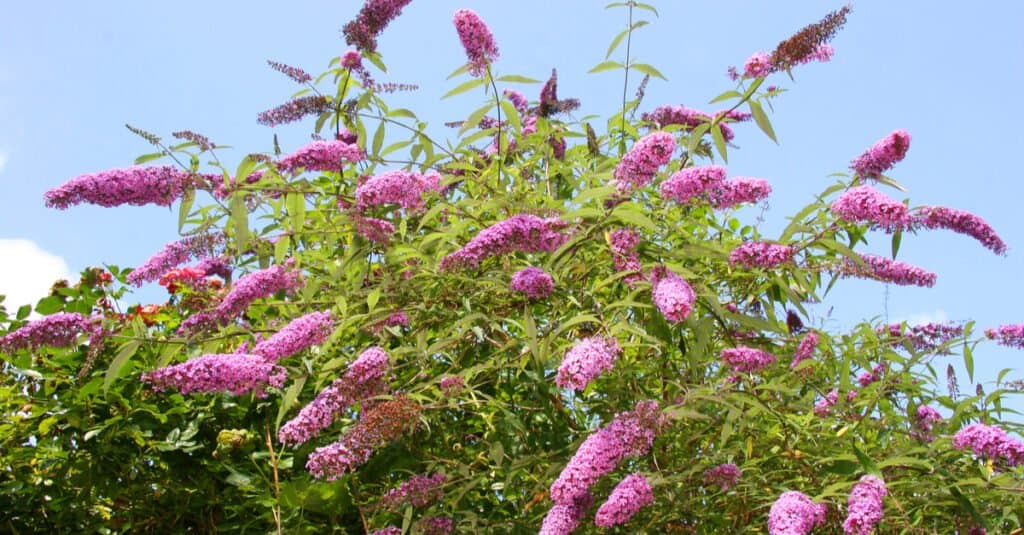
©Dirk M. de Boer/Shutterstock.com
Of course, no one can doubt the butterfly-attracting capabilities of the butterfly bush. This aptly-named shrub is also known as summer lilac. It features long, conical blossoms that stay vibrant and nectar-rich from summer to fall. Although you can find this bush in a range of flower colors from white to dark purple, monarch butterflies and tiger swallowtails seem to prefer lavender to pink hues.
It is important to note that this shrub is invasive and grows best in a bordered garden where it will not grow uncontrolled since it can reach four feet tall and spread. It is also a plant that only attracts adult butterflies, not providing life cycle support for caterpillars, eggs, or pupas. But it certainly lives up to its name if the goal is attracting colorfully winged fliers on the prowl for nectar.
Summary
Here is a list of flowers that are good at attracting butterflies:
| Rank | Flower Name |
|---|---|
| 1 | Butterfly Bush |
| 2 | Coneflower |
| 3 | Lantana |
| 4 | Bluestar |
| 5 | Pot Marigolds |
| 6 | Black-Eyed Susan |
| 7 | Blazing Star |
| 8 | Heliotrope |
| 9 | Lavender |
| 10 | Milkweed |
Next Up…
- 10 Incredible Butterfly Facts: Interested in learning more about butterflies? Here are some facts that you might find captivating.
- Fear Of Butterflies: What’s It Called and Why Are Some People Scared of Butterflies?: Who could be scared of these beautiful creatures? Lots of people out there. Find out more here.
- How Many Insects Are In The World?: Here are more details about different kind of insects around the world that will educate and amaze you.
The photo featured at the top of this post is © RukiMedia/Shutterstock.com
Thank you for reading! Have some feedback for us? Contact the AZ Animals editorial team.




